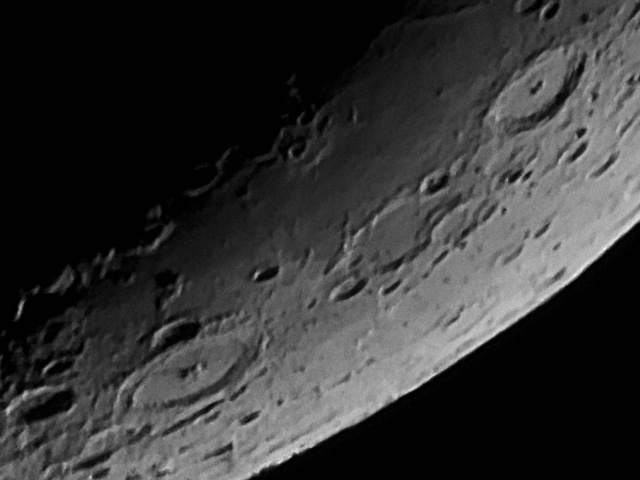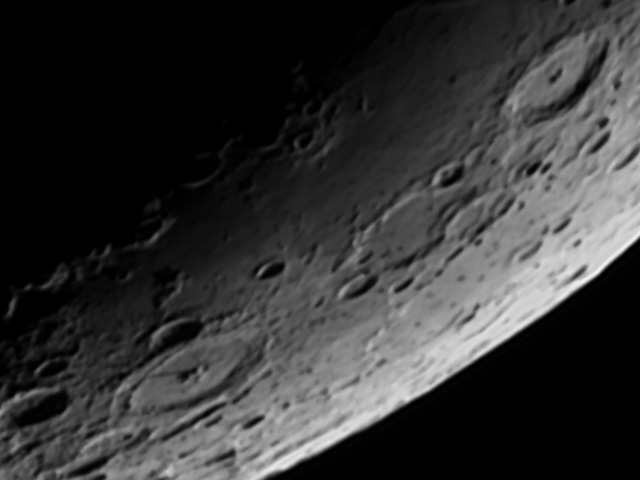- Images
- Blog
- Tools
- Questar
- The Questar telescope
- Questar resource links
- Search for Questar info
- 172mm Focal Reducer
- Afocal adapter for point and shoot camera
- Camera adapter lengths
- Camera adapter threading
- Camera connection
- Camera focusing
- Custom counterweight
- Drift Alignment Joy
- Finder Eyepiece Compatibility
- The Questar Moon 1981
- Questar Powerguide II Battery Life
- Questar Zone, How to Service Videos
- Red Dot finder mount for Questar
- Questar Viewing Table
- Wedge mounts
- White light solar filters comparison
- How to
- Get started in astronomy
- Astro RaspberryPi Camera and kin, the ASIAir and StellarMate
- Blind Smart-phone Equatorial Wedge or GEM Polar Alignment
- Camera phone adapter
- Celestron FirstScope with equatorial tripod mount
- Coat Pocket Astrophotography
- Day-lapse Images of Earthshine on the Crescent Moon
- Dobsonian Carrying Case
- DSO Astrophotography without a Telescope
- DSO imaging without a star tracker
- Estimating image resolution
- Lunar Eclipse Photography
- Moon photography - a dozen ways to shoot the Moon
- Meteor shower photography & planning
- Matching image sensor size to telescope resolution
- Narrow band imaging with color cameras
- Planetary Image Workflow
- Print and Display Astrophotography
- Observing
- Events
- More
- About
- Contact
Moon camera comparison: DSLR & planetary cameras
This is my first attempt at a comparison between a DSLR sensor and planetary camera image, under the same conditions and processing. Both sensors are considered at the top of their class. I expect to repeat this experiment when I'm more familiar with the planetary camera. I believe that these results give a good representation of comparable images from each type of camera.
The DSLR APS-C size sensor is in a Sony a6300 mirrorless camera. The a6300 has an all electronic rolling shutter mode very similar to the electronic shutter in the planetary camera. It is able to image the entire lunar disk in one shot with 24 mega pixels of 4 microns in size at up to 3 frames per second.
The planetary video camera in the comparison is the well regarded ZWO ASI120 MC. A color video camera with a rolling shutter it captures 1.2 mega pixel images of 3.75 microns in size. The smaller chip is only able to capture a small part of the Moon in a single shot. Because of the lesser amount of data in each image capture rates can be up to 35 fps.
More data over a smaller part of the Moon from the video camera
If your target of interest is small and fits in the field of view of the planetary camera, it can capture more images in a given time allowing more and higher quality lucky images to be found for stacking. If you want to image a larger area (e.g., the full lunar disk), multiple overlapping images are needed to create a larger mosaic image. This can negate any advantage for the small field of view camera. The comparison image was kept small to fit on the page at full resolution and to maximize the advantages of the small FOV planetary camera. The data sets used in this comparison reflect this; with 100 images captured by the Sony mirrorless camera and 500 by the ZWO video camera. Of these the 9 best images were stacked from the Sony and 18 were stacked from the ZWO.
Telescope
A Questar 89mm telescope was used with both cameras at prime focus. The Questar has a nominal focal length of 1350 mm at the axial port for the cameras and is well suited to viewing the Moon. Different adapters and camera flange to sensor distances result in a slight difference in focal length between cameras. Diffraction limited performance on the Questar corresponds to a sensor sample pitch of 4.25 microns. The 4 and 3.75 micron sized pixels of these sensors are well matched to this telescope.
Processing
Images were graded, selected, stacked, sharpened and normalized as follows:
- The best images were stacked with the 8 parameter affine parameter alignment in Nebulosity. Because the Sony images were full disk images of the Moon, I expect that the final stacked images for it are less optimized, in the final image area, for seeing variations than the small field of view ZWO images.
- The stacked images were sharpened with nearly identical LR deconvolution and wavelet sharpening operations in Lynkeos.
- The images from the two cameras were aligned and 1:1 cropped to show the same region of the Moon at 640 by 480 pixels.
- The images were then converted to monochrome and intensity and gamma normalized.
You can see a full disk lunar image made from the Sony data. The final cropped image from the Sony a6300 APS-C sensor camera is shown below:

The final cropped image from the ZWO AS120 MC 1/3" planetary video camera:

The benefits of more data and the small FOV stacking optimization are visible in reduced noise and more detail in the planetary camera image.
Content created: 2017-03-31
Comments
![]() Submit comments or questions about this page.
Submit comments or questions about this page.
By submitting a comment, you agree that: it may be included here in whole or part, attributed to you, and its content is subject to the site wide Creative Commons licensing.

Blog
Silver City Heart & Soul Nebulae Revisited
Medulla or Garlic Nebula, CTB1, Abell 85
Nebulae afire off the belt of Orion
City Lights Horsehead & Flame Nebulae
Flaming Star Nebula dark sky vrs city sky face-off
Christmas Tree Cluster and Cone Nebula with more exposure
Christmas Tree Cluster with the Cone Nebula
Horsehead Nebula Face-Off Bortle 2 vrs Bortle 7
California Nebula Face-Off Bortle 2 vrs Bortle 7
Western Veil Nebula from Marfa
Trifid and Lagoon Nebulae Drizzle Stacked
North America and Penguin Nebulae Drizzle Stacked
Return to Coconino Andromeda, M31
Revisiting the Willow House Rosette
Corazón Incendida, the Heart Nebula
Elephant Trunk with the Garnet Star
Balanced HO North America & Pelican Nebulae
The Lagoon & Trifid Nebulas from Marfa
Western Veil Nebula from Marfa
The Great Winter Solstice Conjunction of Jupiter and Saturn
Two days to the Great Jupiter Saturn Conjunction
Worlds Apart, the Jupiter Saturn Conjunction
Raspberry Pi HQ camera first light
Waxing Crescent Moon with earthshine and stars
Vixen Porta II mount adapter or aluminum disk with holes #2
The 2019 ACEAP Expedition to Chile
Universe of Stories: Getting Started in Astronomy
View an Apollo flag on the Moon from Earth?
Apollo 50th is my 24th Flickr Explore Selection
Shooting the video stars - Moon and Jupiter
Ready for a change in perspective
Jupiter and the Galilean Moons through a camera lens
2022 the Solar System in one view
As hard to see as a doughnut on the Moon
Santa Inez miners church Terlingua
Waning gibbous Moon early Christmas Eve
Christmas eve on the eastern limb of the Moon
Mars at 23.3 arc sec with Syrtis Major
BadAstroPhotos Web Site Analytics
Saturn with Pixinsight workflow
Mars Update from Mauri Rosenthal
Waxing Gibbous Moon Terlingua Texas
Io Transit of Jupiter with the Great Red Spot
Not so bad Astro after 2 years
Eyes of the Llama from Urubamba
Moon and Venus over Cusco's El Monasterio
Tiangong-1 Space Station reentry tracking
Apollo - 50 years of human footprints on the Moon, complete!
Waxing Crescent Moon after Astrophotography Meetup
The Great American Eclipse from Above and Below
A million astro photo views on Flickr
Ansel Adams: Moonrise, Hernandez, New Mexico
December Solstice Crescent Moon with Earthshine
January 31 Blue Moon Lunar Eclipse
The Total Solar Eclipse in half a minute
2017 Solar Eclipse from a million miles away
Longhorn Eclipse from a Wyoming Hilltop
Fibs, damn lies, telescopes, and astrophotography
Full Moon before Total Solar Eclipse 2017
Longhorn Crescent Moon from Austin
The Crescent Moon with Jupiter and moons
Eye of the storm 2 - Juno & Jupiter's Great Red Spot
Eye of the storm - Juno & Jupiter's Great Red Spot
A million miles from earth, the Moon and earth east and west
Saturn with Titan, Dione, Tethys, & Rhea
Animated transit of Jupiter by Io
Solar Eclipse 2017 Highway Traffic Map
Mid-South Star Gaze + Questar Meet
Sweet Home Alabama Transit of Jupiter by Io
Update on AutoStakkert on macOS
Diffraction is not the limit for digital images
Teasing life into planetary images
Moon camera comparison: DSLR & planetary cameras
Waning Crescent Moon with Earthshine
1st day of Spring last quarter Moon
Lewis Morris Rutherfurd's Moon
Super Moonrise over Lady Bird Lake
360 Tower pierces the Super Moon
Lisbeth's Birthday Crescent Moon
The Moon and Mars from the Astro Café
Silent and Mechanical Shutter Comparison
Austin's Solar Sidewalk Sun-Day
Another Longhorn Moon over Austin
Jupiter and Venus do a father-daughter dance
Sunset with Mercury, Jupiter, and Venus
Mercury, Jupiter & Venus after sunset
3 months, 92 nations, 3750 visitors, 100,000+ images served
Upcoming Conjunction of Jupiter & Venus
The Perseid Meteor Shower with the Andromeda Galaxy
Waxing crescent Moon from UHD Video
NWS Interactive Digital Forecast Map
M7 the Ptolemy Cluster preview
Five Planets in the Sky at Dusk
Lucky Fat Waning Crescent Moon
Two months, 80 nations, and an embarrassing bug
Saturn with 5 moons: Titan, Rhea, Enceladus, Tethys, & Dione
The nearly full Moon and Saturn with a short tube refractor

 2025
2025
